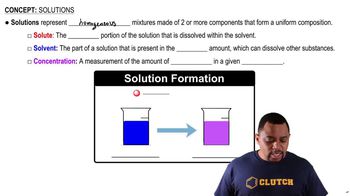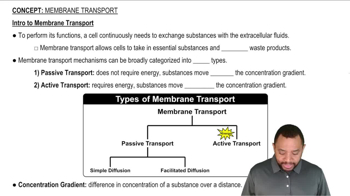Match the lipoprotein (1 to 4) with its description (a to d).
1. chylomicrons
2. VLDL
3. LDL
4. HDL
b. transports most of the cholesterol to the cells
 Verified step by step guidance
Verified step by step guidance Verified video answer for a similar problem:
Verified video answer for a similar problem:



 1:21m
1:21mMaster Membrane Transport Concept 1 with a bite sized video explanation from Jules
Start learning